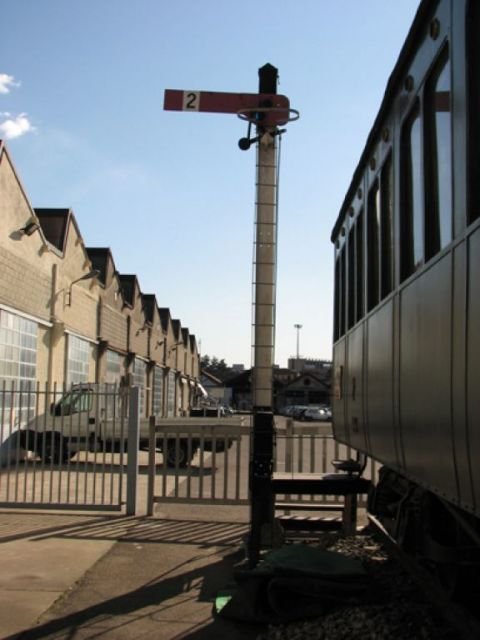SECOND CATEGORY RAILWAY SEMAPHORE SIGNAL, F.S. TYPE

-
Item owner - FNM
-
Category - FNM Collection
-
Inventory - 1698
-
Author - I.V.E.M.
-
Dimensions - 4.90x1.60x0.30 cm
-
Dating - 1935-1980
Metal pole anchored to the ground, on which a metal ladder rests, ending in a lifeline for workers. At the top, hinged onto the pylon, is a rectangular metal blade like a flag, slightly larger at the hinged end, with two round windows containing red glass at the top and green glass at the bottom. The blade has a red background with a white rectangle at the outer end. A black 2 on the white background indicates that the signal is category 2. A metal wire anchored to the blade passes through a number of pulleys and down parallel to the pole, ending in a metal box where it is wound onto a roller splined onto an electric motor. Behind the top red widow is a lamp kept permanently on to illuminate the signal. A metal tie plate connected with the wire under the blade serves as a counterweight. The electric motor is contained in a metal box on a shelf attached to the lower part of the pole.
Features of the electric motor: DC motor no. 2317; type R1; Hp 1; 110 v; 0.65 amp; 2500 rev/min.
The signal shows the incoming train a red stop signal or a green go signal.
The signal is installed before a station. In the normal horizontal position, the signal is red, showing that the way is barred. If the train is to enter the station, the stationmaster presses a button to start the signal motor, winding the metal wire and pulling the semaphore signal down by about 30°. It stops in the position in which the green window is in front of the lamp, which lights it up, giving the train the green signal to enter the station.